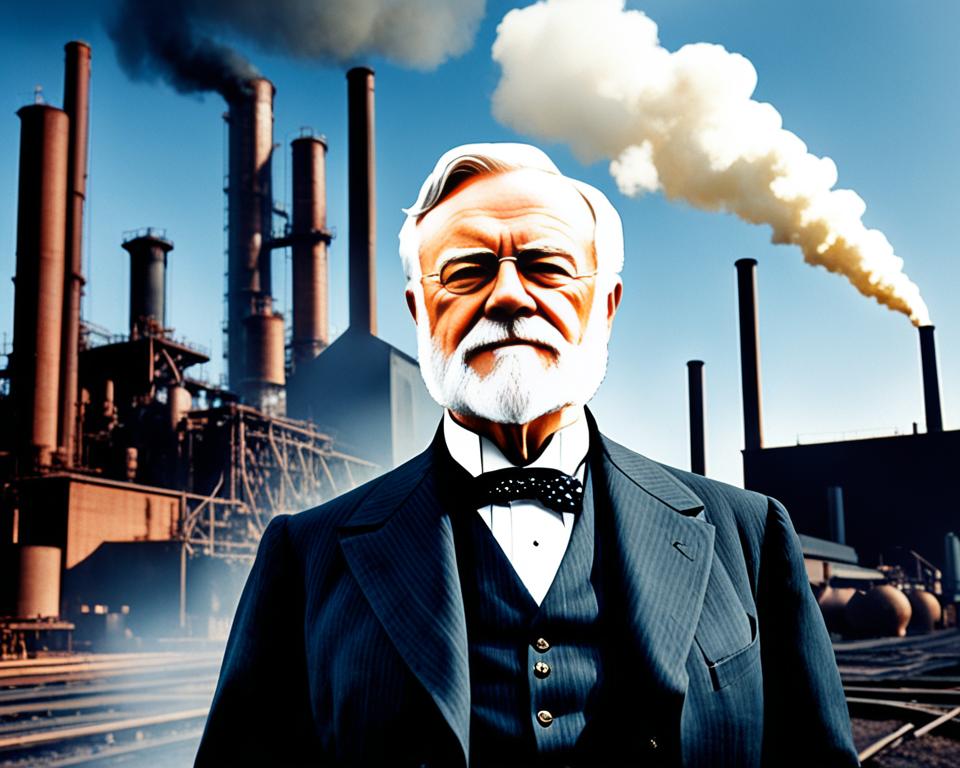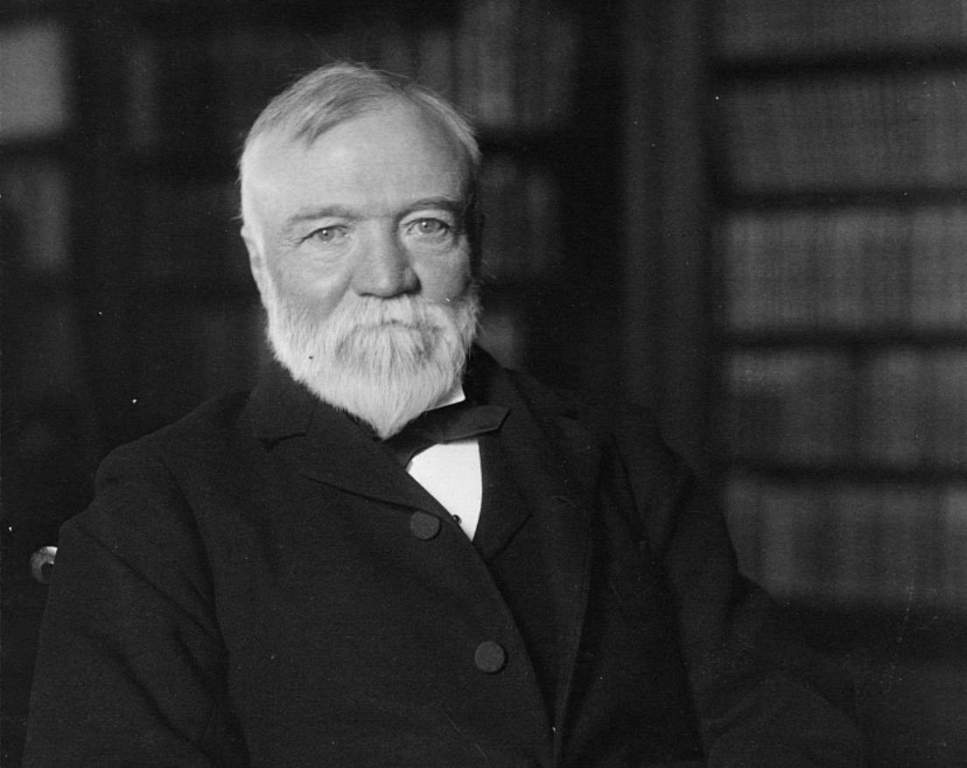Ever wondered how some individuals amass fortunes that reshape industries and leave lasting legacies? Andrew Carnegie's story is a testament to the power of strategic vision, relentless execution, and a deep understanding of the transformative potential of steel.
Andrew Carnegie, a towering figure of the American Industrial Revolution, etched his name into history primarily through his dominance of the steel industry. Unlike contemporaries who ventured into nascent fields like radio, electricity, or telegraphy, Carnegie laser-focused on steel production, revolutionizing its efficiency and scalability. His Carnegie Steel Company became synonymous with innovation and unprecedented profitability, setting new standards for industrial enterprise in the United States.
| Category | Information |
|---|---|
| Full Name | Andrew Carnegie |
| Born | November 24, 1835, Dunfermline, Scotland |
| Died | August 11, 1919, Lenox, Massachusetts, United States |
| Nationality | American (naturalized) |
| Spouse | Louise Whitfield (m. 1887) |
| Child | Margaret Carnegie Miller |
| Education | Largely self-educated |
| Career |
|
| Key Company | Carnegie Steel Company (later U.S. Steel) |
| Net Worth (at death) | Approximately $300 million (equivalent to billions today) |
| Philanthropic Focus | Education, libraries, peace, scientific research |
| Notable Foundations | Carnegie Corporation of New York, Carnegie Endowment for International Peace, Carnegie Mellon University |
| Legacy | Revolutionized steel production, major philanthropist, established numerous cultural and educational institutions. |
| Reference | Carnegie Corporation of New York |
Carnegie's journey to immense wealth began well before his steel empire. His early employment at the Pennsylvania Railroad showcased his innate ability to identify lucrative investment opportunities. Recognizing the potential of T.T. Woodruff's innovative sleeping cars, Carnegie invested wisely, reaping significant returns. Similarly, he capitalized on the burgeoning oil industry in western Pennsylvania in 1859, further solidifying his financial foundation.
- Bank Of Dave Burnley Savings Loans Story Movie Reality
- Ryan Lewis Net Worth 2024 Macklemores Partners Wealth Revealed
The cornerstone of Carnegie's fortune was undoubtedly the Carnegie Steel Company. He meticulously built the company into the largest and most profitable industrial enterprise of its time. A key aspect of his success was his relentless pursuit of efficiency. He implemented innovative technologies and streamlined production processes, allowing him to produce steel at a lower cost than his competitors. This cost advantage enabled him to capture a significant share of the market and drive substantial profits.
Beyond efficiency, Carnegie's strategic acumen played a pivotal role. He understood the importance of vertical integration, acquiring control over all aspects of the steel production process, from raw materials to transportation. This allowed him to minimize costs, ensure a consistent supply of resources, and exert greater control over the market. His partnerships and investments were equally strategic, enabling him to diversify his holdings and mitigate risks.
In 1901, Carnegie made a monumental decision, selling Carnegie Steel to J.P. Morgan for a staggering $480 million. This transaction marked the end of an era and solidified Carnegie's status as one of the wealthiest men in the world. However, his story doesn't end there. Carnegie's philosophy extended beyond wealth accumulation; he believed in using his fortune to benefit society.
- Griffin Oneal Shocking Claims Family Drama 2024 Update
- Ray Mcelrathbey The Inspiring True Story Behind Safety
Driven by a deep-seated conviction that the wealthy had a moral obligation to redistribute their wealth for the betterment of humanity, Carnegie embarked on a remarkable philanthropic journey. He articulated his philosophy in his seminal essay, "The Gospel of Wealth," advocating for responsible stewardship of riches during one's lifetime. He argued against leaving vast fortunes to heirs, believing that wealth should be used to promote education, culture, and progress.
The Carnegie Corporation of New York, established in 1911, became the primary vehicle for his philanthropic endeavors. This innovative foundation has since supported a wide range of causes, leaving an indelible mark on society. From funding the discovery of insulin and contributing to the dismantling of nuclear weapons to supporting the creation of Sesame Street and the development of Common Core standards, the Carnegie Corporation's impact is undeniable.
Carnegie's commitment to education was unwavering. He believed that access to knowledge was essential for individual and societal advancement. He established thousands of libraries across the United States and around the world, providing communities with free access to books and resources. These libraries served as centers of learning and empowerment, transforming lives and fostering a culture of literacy.
Beyond libraries, Carnegie founded numerous educational institutions, including the Carnegie Institute of Technology (now Carnegie Mellon University). These institutions were designed to provide practical, hands-on training in fields relevant to the burgeoning industrial economy. They equipped students with the skills and knowledge needed to succeed in a rapidly changing world.
Carnegie's philanthropy extended to the realm of international peace. He believed that war was a relic of the past and that nations could resolve their disputes through diplomacy and cooperation. He established the Carnegie Endowment for International Peace, an organization dedicated to promoting understanding and preventing conflict. The endowment has played a significant role in fostering international dialogue and supporting peace initiatives around the globe.
Upon his death in 1919, Carnegie's net worth was estimated to be around $300 million, a substantial sum in that era. In his will, he bequeathed $30 million, the bulk of his remaining fortune, to the Carnegie Corporation, ensuring that his philanthropic work would continue for generations to come. His legacy extends far beyond his wealth; it is defined by his commitment to using his resources to make a positive impact on the world.
Carnegie's story is not without its complexities. He faced criticism for his labor practices, particularly during the Homestead Strike of 1892, a violent clash between workers and management at one of his steel plants. This event tarnished his reputation and raised questions about the ethical implications of his business practices. However, his philanthropic contributions and his vision for a more equitable society cannot be ignored.
Andrew's brother, Thomas, also made his fortune in the steel industry. Unlike Andrew, Thomas had a larger family and died relatively young at age 42. While Andrew chose to donate the bulk of his wealth to causes, Thomas's situation highlighted the different choices individuals face when dealing with substantial wealth.
In conclusion, Andrew Carnegie's rise to wealth and prominence was a result of his strategic investments, innovative business practices, and a deep understanding of the steel industry. His ability to identify opportunities, control costs, and vertically integrate his operations allowed him to build a steel empire that dominated the market. His philanthropic endeavors, guided by his "Gospel of Wealth," left an enduring legacy of education, culture, and peace. Carnegie's story serves as a reminder of the transformative power of wealth when combined with a commitment to social responsibility.
It's important to remember that while Carnegie is primarily known for steel, he also demonstrated entrepreneurial brilliance early on. His investment in Woodruff's sleeping cars and his foray into the oil business in western Pennsylvania showcased his ability to recognize and capitalize on emerging industries. These early ventures laid the groundwork for his later success in steel.
Furthermore, Carnegie's focus on efficiency was not merely about cutting costs; it was about revolutionizing the steel production process. He embraced new technologies and implemented innovative management techniques, transforming the industry and setting new standards for productivity. This commitment to innovation was a key factor in his ability to outcompete his rivals and build a dominant market position.
His story also highlights the complexities of the Gilded Age, a period of rapid industrialization and vast wealth accumulation. While Carnegie's philanthropy is commendable, it's crucial to acknowledge the social and economic inequalities that characterized this era. His story prompts us to consider the responsibilities that come with wealth and the importance of ensuring that economic progress benefits all members of society.
The rise of the United States to industrial supremacy in the late nineteenth century was fueled by several factors, including an abundance of raw materials, a growing labor supply, and an expanding market. Carnegie's story is intertwined with these developments, as he capitalized on these opportunities to build his steel empire. His success demonstrates the power of entrepreneurship, innovation, and strategic vision in driving economic growth.
Inspired in part by President Garfield's assassination, the Civil Service Act of 1883 aimed to create a merit system for federal employees, addressing concerns about patronage and corruption. This act reflects the broader reform efforts of the era, aimed at promoting efficiency and accountability in government. Carnegie's story is set against this backdrop of political and social change, as the nation grappled with the challenges of industrialization and urbanization.
In essence, Andrew Carnegie's life was a remarkable journey from humble beginnings to immense wealth and profound philanthropy. He was a pioneer in the steel industry, a shrewd investor, and a visionary philanthropist. His legacy continues to inspire and challenge us to consider the role of wealth in society and the importance of using our resources to create a better world.



Detail Author:
- Name : Nikko Lind
- Username : streich.nicolette
- Email : dawn81@yahoo.com
- Birthdate : 1997-08-16
- Address : 583 Deckow Isle East Gwendolynhaven, OH 37313-4543
- Phone : 754-257-1591
- Company : Gutmann, Ratke and Walsh
- Job : Camera Operator
- Bio : Laboriosam quidem ut ut voluptas qui. Facilis enim dignissimos ut. Aut cupiditate nostrum sit vitae aperiam quo.
Socials
instagram:
- url : https://instagram.com/alannamoen
- username : alannamoen
- bio : Modi nisi aut commodi sapiente occaecati. Deleniti impedit voluptatum eius enim.
- followers : 1555
- following : 1843
linkedin:
- url : https://linkedin.com/in/amoen
- username : amoen
- bio : Dolor eius totam fugit omnis.
- followers : 3865
- following : 2789
tiktok:
- url : https://tiktok.com/@amoen
- username : amoen
- bio : Est in vitae adipisci possimus consequatur.
- followers : 5430
- following : 543